Tuchulcha: Wicked, Hideously Grotesque Etruscan Demon Identified With Both Male And Female Genders
A. Sutherland - AncientPages.com - In ancient Etruscan beliefs, there is a strange monster to which many scholars refer to a man because of the animal face and facial hair that can resemble a beard.
1870 reconstructed drawing of Tuchulcha painting in the Tomb of Orcus II. In this drawing, Tuchulcha is depicted along with Theseus. Image credit: Schulz dis. e inc. – Public Domain
Others believe this mostly unusual deity known as Tuchulcha can be of the opposite sex. He used to wear a woman's dress, his skin was pale pink, and he appeared to have breasts.
Tuchulcha (Tulchulca or Tuxulxa) is a wicked Etruscan God with demonic attributes. Still, his appearance was long unknown until his statue was finally unearthed in the summer of 1974 at Tarquinia Necropolis, Italy.
The Etruscans lived between Florence and Rome and had a very sophisticated culture and technology. They were wealthy, luxury-loving people fond of banqueting and music. Their civilization flourished for almost a thousand years before being absorbed by the Roman Empire.
The Etruscans were a profoundly religious society in which goddesses and demons played a crucial role in their religion and scenes of the human sacrifice they traditionally practiced. Demons were frightening and grotesque characters, often painted on the walls of large tombs. They traditionally guided the dead to the afterlife.
The two most famous demons are Tuchulcha and Charun - the announcer of death and divider of families, the guide on the road to Hades, and the porter at the gate of hell.
In many respects, he is an Etruscan equivalent to Charon, a psychopomp, the ferryman of Hades, the Greek underworld. Tuchulcha's appearance seems to confirm imagined attributes. He has a hooked, thick nose, an eagle's beak, long ears like a donkey's, a mouth with fleshy lips, and a small conical beard. Instead of hair, this grotesque monster has snakes growing from the head, carrying additional snakes to scare the new souls.
Fresco from the Tomb of Orcus II, Tarquinia, Italy. The daemon Tuchulcha is watching the hero Tese (Theseus) playing a boardgame with his friend. Image credit: Robin Iversen Rönnlund - CC BY-SA 3.0
The monster Tuchulcha was often depicted along with other demons of death. Interestingly, in "inscriptions on tomb paintings and sarcophagi, no gods or demons of Hades are mentioned or illustrated before the fourth century. B.C. From then on, however, pictures of creatures that peopled the life after death are common." 1
Generally, scholars refer to the monster as a Man because of its animal face and facial hair, which can resemble a beard. In "Etruscan Myth, Sacred History, and Legend," Nancy Thomson de Grummond wrote that Tuchulcha could be of the opposite sex, claiming to wear a woman's dress, have pale pink skin, and seems to have breasts.
Other researchers have supported her theory regarding this monster. However, many others point out that both sexes wore the chiton at the time.
With extreme devotion, the Etruscans worshipped the souls of the dead. They believed in the real hell, to which souls of the dead were brought by Charun, an old animal-like man with wings and a heavy hammer, who represents the underworld psychopomp in Etruscan myths.
There are many such demons on the Etruscan tombs' painted walls. One is Mantis, the king of hell, adorned with a crown, wings, and a torch in his hand. Also, the frightening Tuchulcha belonged to this group.
Red-figure amphora from Vulci . The tuchulcha is on the right side, with two snakes coiled around the arms. Image credit: George Dennis - Drawing after original by George Dennis, The Cities and Cemeteries of Etruria , 1848.
Interestingly, Tuchulcha was never a popular figure to be depicted.
One appearance of this frightening deity of the underworld was recognized in a fresco, "The Story Of Theseus Visiting the Underworld," dated to 300 BC and associated with the mysterious Tomb of Orcus II in Tarquinia.
In this tomb, one scene shows Theseus, the mythical king and founder-hero of Athens, and his companion, Pirithous, seated on either side of a table, playing a board game. Behind them rises a fearsome winged demon with a vulture's beak, ass's ears, and snake-infested hair. This monster brandishes a great, bearded serpent over Theseus' head; his name is Tuchulcha, a purely Etruscan demon. The monster Tuchulcha is watching them and threatening Theseus with a great snake. 1
Tuchulcha's function in the underworld is not entirely known. However, it is believed he was busy punishing or scaring the souls of those who misbehaved when alive.
Whether Tuchulcha played an essential role in the underworld is hard to say. Undoubtedly, his position could not be compared to that of King Hades and Queen Persephone.
Updated on March 13, 2024
Written by – A. Sutherland - AncientPages.com Senior Staff Writer
Copyright © AncientPages.com All rights reserved. This material may not be published, broadcast, rewritten or redistributed in whole or part without the express written permission of AncientPages.com
Expand for referencesReferences:
Nancy de Grummond, Etruscan Myth, Sacred History and Legend
Pecchioni, Enio. The Etruscan Religion and Language Riddle
Bonfante Larissa, Etruscan Myths
More From Ancient Pages
-
 Huge Viking Burial Discovered Beneath Streets Of Dublin
Archaeology | Aug 6, 2014
Huge Viking Burial Discovered Beneath Streets Of Dublin
Archaeology | Aug 6, 2014 -
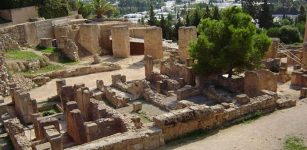 Carthage: Prosperous Phoenician Colony That Became Dominant Power In The Western Mediterranean
Featured Stories | May 21, 2020
Carthage: Prosperous Phoenician Colony That Became Dominant Power In The Western Mediterranean
Featured Stories | May 21, 2020 -
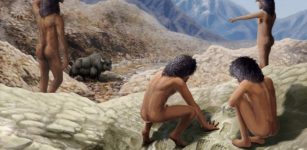 Child’s Play: Are Tibetan Hand And Foot Traces The Earliest Example Of Parietal Art?
Archaeology | Sep 18, 2021
Child’s Play: Are Tibetan Hand And Foot Traces The Earliest Example Of Parietal Art?
Archaeology | Sep 18, 2021 -
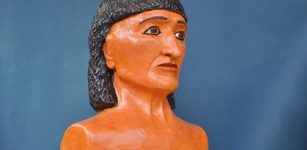 Researchers reconstructed face of oldest pharaonic mummy ‘Kent’
News | Sep 1, 2015
Researchers reconstructed face of oldest pharaonic mummy ‘Kent’
News | Sep 1, 2015 -
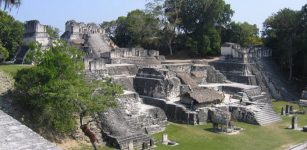 Ancient Maya Built Sophisticated Water Filters To Obtain Drinking Water
Archaeology | Oct 23, 2020
Ancient Maya Built Sophisticated Water Filters To Obtain Drinking Water
Archaeology | Oct 23, 2020 -
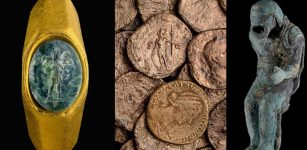 Magnificent Underwater Treasure Recovered From Two Ancient Shipwrecks Off The Coast Of Caesarea
Archaeology | Dec 28, 2021
Magnificent Underwater Treasure Recovered From Two Ancient Shipwrecks Off The Coast Of Caesarea
Archaeology | Dec 28, 2021 -
 Mysterious Unknown Beings Who Walked The Earth With Humans
Ancient Mysteries | Sep 15, 2020
Mysterious Unknown Beings Who Walked The Earth With Humans
Ancient Mysteries | Sep 15, 2020 -
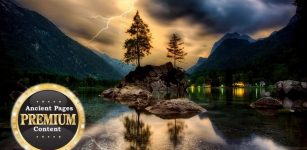 Unexplained Mystery Of The Untraceable Stone-Throwers – Strangeness In North America, Belgium And Indonesia – Part 1
Featured Stories | Nov 11, 2019
Unexplained Mystery Of The Untraceable Stone-Throwers – Strangeness In North America, Belgium And Indonesia – Part 1
Featured Stories | Nov 11, 2019 -
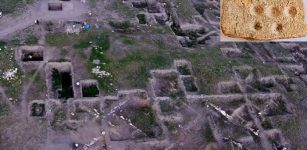 5,000-Year-Old Stone Paint Palette Unearthed In Küllüoba Mound
Archaeology | Sep 9, 2020
5,000-Year-Old Stone Paint Palette Unearthed In Küllüoba Mound
Archaeology | Sep 9, 2020 -
 On This Day In History: Seismologist Charles Richter Was Born – On Apr 26, 1900
News | Apr 26, 2016
On This Day In History: Seismologist Charles Richter Was Born – On Apr 26, 1900
News | Apr 26, 2016 -
 How Gilgamesh Defeated Mighty King Agga Of Kish
Mesopotamian Mythology | Oct 16, 2016
How Gilgamesh Defeated Mighty King Agga Of Kish
Mesopotamian Mythology | Oct 16, 2016 -
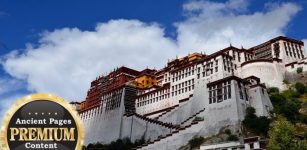 Who Is Secretly Keeping A Watching Eye On Tibetan Monasteries?
Ancient Mysteries | May 14, 2019
Who Is Secretly Keeping A Watching Eye On Tibetan Monasteries?
Ancient Mysteries | May 14, 2019 -
 Head Of The Great Sphinx Was Changed – It’s The Gateway To A Secret Underground City– Historians Suggest
Featured Stories | Jan 20, 2018
Head Of The Great Sphinx Was Changed – It’s The Gateway To A Secret Underground City– Historians Suggest
Featured Stories | Jan 20, 2018 -
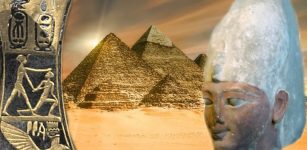 Pharaoh Ahmose I Expelled The Hyksos Invaders And Changed History Of Ancient Egypt
Featured Stories | Mar 16, 2021
Pharaoh Ahmose I Expelled The Hyksos Invaders And Changed History Of Ancient Egypt
Featured Stories | Mar 16, 2021 -
 A 3,500-Year-Old Grape Seed Sheds Light On Great Tradition Of Vineyards Of Anatolia’s Çal And Region
Archaeology | Sep 13, 2023
A 3,500-Year-Old Grape Seed Sheds Light On Great Tradition Of Vineyards Of Anatolia’s Çal And Region
Archaeology | Sep 13, 2023 -
 Ancient City Of Urkesh – Home Of Kumarbi – The Foremost Son Of Anu
Featured Stories | Aug 24, 2020
Ancient City Of Urkesh – Home Of Kumarbi – The Foremost Son Of Anu
Featured Stories | Aug 24, 2020 -
 Incredible Trove Of 100,000 Ancient Coins Tied Together In Bundles Uncovered In Japan
Archaeology | Nov 13, 2023
Incredible Trove Of 100,000 Ancient Coins Tied Together In Bundles Uncovered In Japan
Archaeology | Nov 13, 2023 -
 What Was Lex Salica?
Ancient History Facts | Dec 13, 2017
What Was Lex Salica?
Ancient History Facts | Dec 13, 2017 -
 Lost World Of Doggerland: Parts Of Britain’s Sunken Stone Age Atlantis Discovered
Archaeology | Jul 4, 2012
Lost World Of Doggerland: Parts Of Britain’s Sunken Stone Age Atlantis Discovered
Archaeology | Jul 4, 2012 -
 Spectacular Ancient Underground ‘Stonehenge’ Dolmen De Soto Reveals Its Secrets
Archaeology | Apr 18, 2019
Spectacular Ancient Underground ‘Stonehenge’ Dolmen De Soto Reveals Its Secrets
Archaeology | Apr 18, 2019



